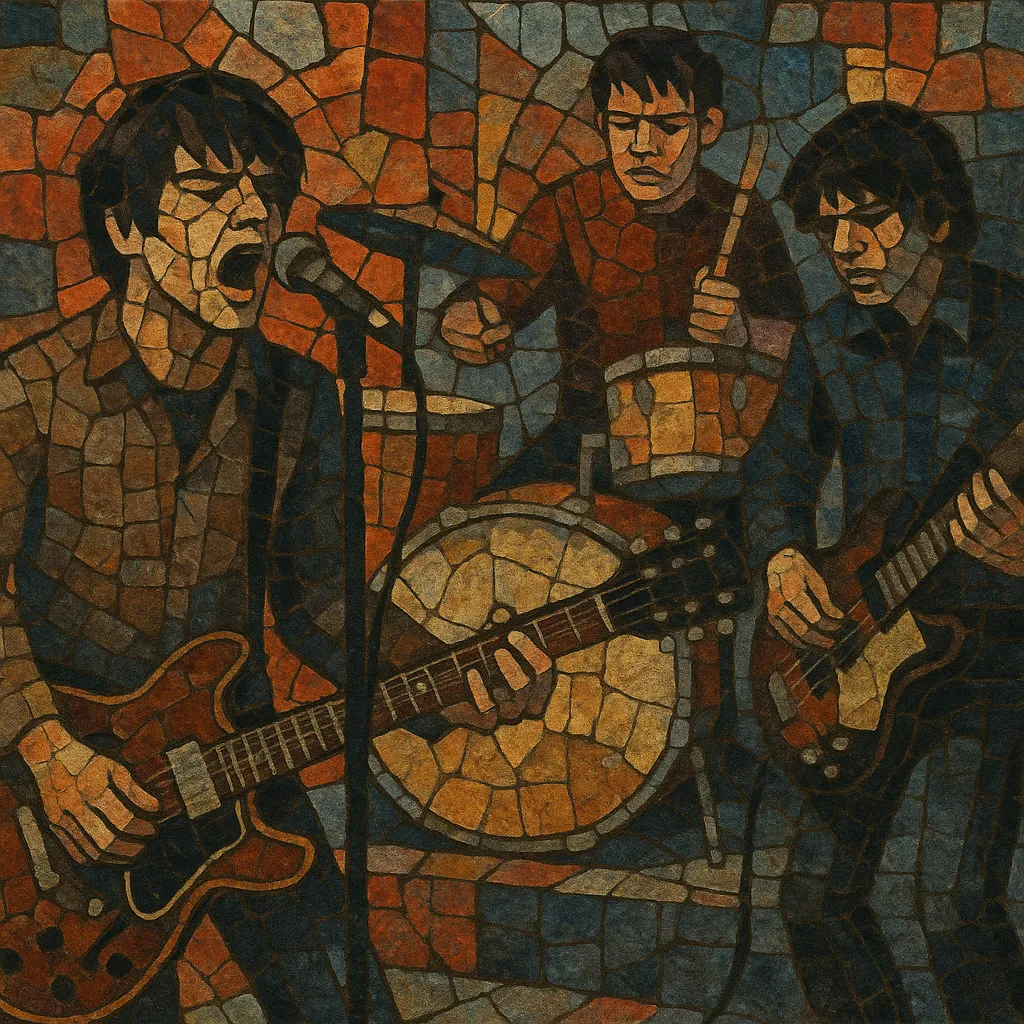
Garage rock is a raw, energetic style of rock music that emerged in the mid-1960s from local scenes across North America. Typically performed by amateur or semi-professional teenage bands in basements and suburban garages, the sound is unpolished and immediate, favoring feel over finesse.
Its hallmarks include distorted guitars, pounding drums, simple chord progressions (often I–IV–V), prominent Farfisa/Vox organ riffs, and shouted, attitude-heavy vocals. Songs are short, hooky, and driven by rhythmic urgency, with lyrics about teenage love, boredom, rebellion, and swagger. The style became a direct ancestor of proto-punk and punk rock, prized for its do-it-yourself spirit and visceral impact.
Garage rock took shape in the United States during the early 1960s, catalyzed by rock and roll, rhythm & blues, and the surf/instro boom. The British Invasion of 1964 (Beat and Merseybeat groups) spurred countless American teens to form bands, leading to a nationwide explosion of raw, locally produced singles. Regional hotspots included the Pacific Northwest (The Sonics), the Midwest/Chicago area (The Shadows of Knight), Texas (13th Floor Elevators), and Los Angeles (The Standells).
Between 1965 and 1967, garage rock filled local radio and teen dances with fuzz-toned guitars, swaggering vocals, and organ-driven riffs. Many bands cut one or two singles for small labels and disappeared, while a few broke nationally (The Kingsmen’s "Louie Louie," Paul Revere & the Raiders). As psychedelia rose, some garage bands absorbed trippier textures and more experimental lyrics, edging toward early psychedelic rock.
By the early 1970s, the style receded from charts but gained cult status through compilations like Lenny Kaye’s "Nuggets" (1972), followed by "Pebbles" and "Back from the Grave," which canonized hundreds of obscure 45s. The music’s blunt energy and DIY ethos directly informed proto-punk and then punk rock in the mid-to-late 1970s. A dedicated garage revivalist underground thrived in the 1980s and 1990s, and the 2000s saw a mainstream resurgence with bands like The White Stripes and The Hives updating the sound without losing its bite.
Garage rock’s enduring legacy lies in its immediacy, economy, and do-it-yourself spirit. It provided the blueprint for punk’s simplicity and attitude, influenced power pop’s hooks, and shaped later waves of indie and alternative rock. Its regional, grass-roots origins continue to inspire new bands to pick up cheap gear, write punchy songs, and record with minimal fuss.

